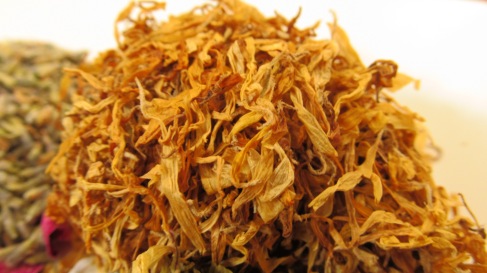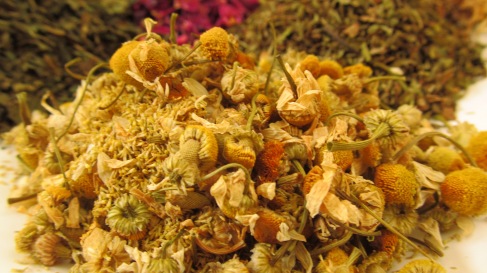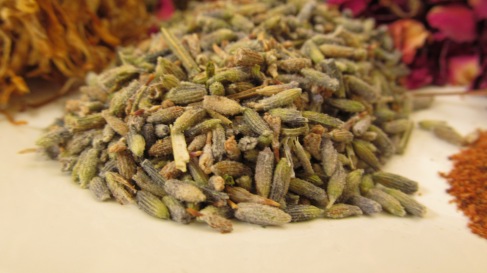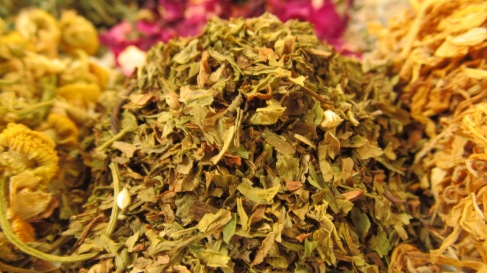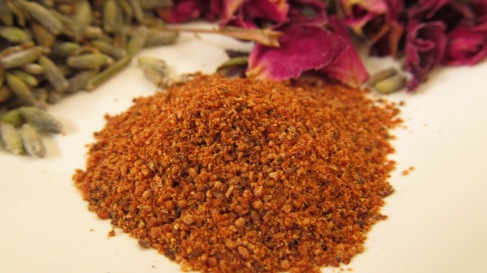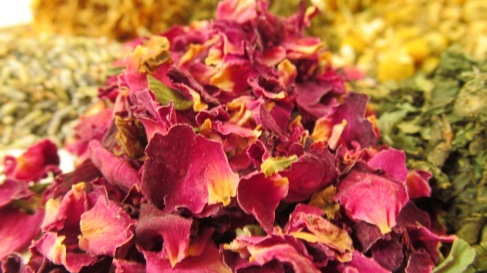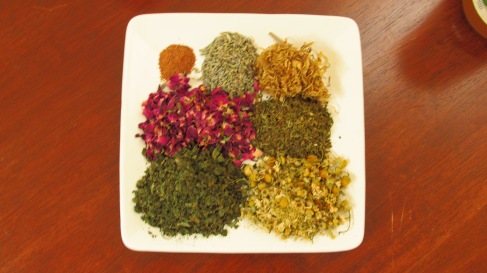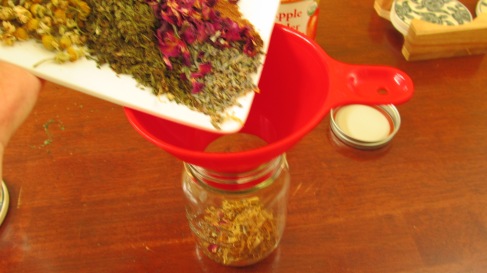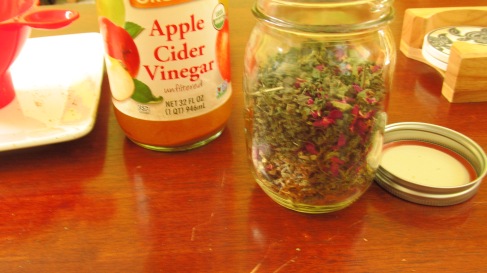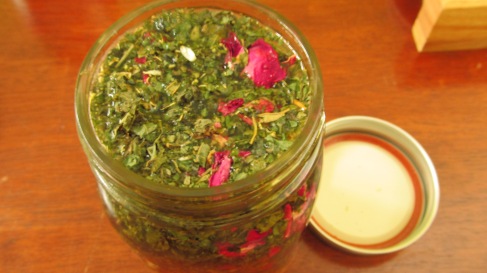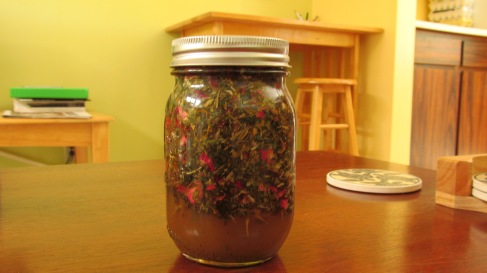Dear Cyber-Friends,
To kick off the week, I decided I’d give you a photo-filled Creative Day post!
This week, I’ll be showing you how to make a batch of herb-steeped apple cider vinegar (ACV) rinse, which I use instead of a hair conditioner.
To begin, choose which herbs, flowers, and/or spices to use. Internet searches can give you lists and idea of what is good for different types and conditions of hair, so I’ll just show what I picked for this batch:
Calendula. You may have used a calendula salve at some point to sooth itchy skin or rashes. This little flower is great for many uses, hair included.
Chamomile. Probably most commonly known for a relaxing tea, this flower is a standard go-to for most of my mixes because it’s so versatile and beneficial.
Lavender. Like chamomile, this flower has basically endless uses and benefits.
Mint. This is a mix of peppermint and spearmint, actually. Mint, again, has many benefits and can be used in pretty much anything.
Nettle. Perhaps best known as a stinging weed, nettles are actually a highly useful and healthy addition to beauty products, tea, and even cooking. They also happen to be great for hair rinses.
Nutmeg. A great little spice I like to add to many skin and hair care recipes. Plus it smells like Christmas!
Rose petals. Make sure you use ones that still have a rose scent; besides the obvious reason of it smelling better, it means they’re fresher and will still have the beneficial properties of roses. This is actually true for any herbs and spices you acquire. Great for both skin and hair.
Other ingredients I sometimes use for this are green tea, jasmine, cloves, thyme, rosemary, mugwort, or hibiscus.
The amounts of everything you use is completely up to you. My proportions change with each batch because I never bother with measuring for this “recipe”.
If you’re not sure, then I suggest planning to get your container about halfway full with herbs and flower, and either have a 1:1 ratio of everything (except spices, which will be a lot less — as you can see above, I used about a tablespoon of nutmeg).
I tend to up the ratio of flowers, because they tend to be less concentrated than herbs — making it take more to get the same impact — but it depends on the flowers, and on what result you want. In this case, my largest proportions are of nettle, rose, and chamomile; rose because I love the smell, chamomile because it’s soothing and good for dark hair, and nettle because it’s clarifying and also good for dark hair.
Once you have your herbs, flowers, and spices gathered, there’s one more ingredient:
Now you’ll need to steep the herbs in the ACV.
This will require a container; I use a clean mason jar:
Whatever container you use, make sure it’s not metal or plastic; either could react badly to the acid of the vinegar, and ruin the benefits of your potion. Also, choose something wide-mouthed. This will make getting the herbs in and out of it much easier on you.
Speaking of which:
You can use a canning funnel to help prevent messes! Plus, if you do this on a clean, smooth surface, then you can scoop up anything that spills and add it back in.
The jar full of herbs. It’s a little over half full — the last batch I made was about a quarter full. Anything in that range will turn out fine; you can just add time the steeping stage if you’re using a small amount.
Pour ACV over the herbs. Make sure you fill up the container; you don’t want air space left in the jar. I’d suggest stirring or shaking the jar right away to clear out air pockets, especially if you have a lot of herbs. Then you can add more ACV.
Once it’s all put together, all you have to do is shake the jar at least once a day, for at least two weeks. Keep it somewhere you’ll remember about it, but which doesn’t get direct sunlight or too much heat. I have it on an open shelf in my bathroom. Also, you might want to label and/or date the container, especially if you have other similar projects around.
The high acid content of vinegar is a natural preservative , so you don’t have to worry about refrigerating it at this stage — I don’t, and I live in Hawaii where EVERYTHING grows in ways you don’t always want, given the slightest chance.
When the two weeks (or up to a month or more) is over, you’re ready to strain out the herbs. I tend to do it in two stages to make it more manageable.
Step one is to empty the whole jar into something easy to pour from, via a regular colander. This gets the majority of herbs out of the way — which you’ll want to squeeze by hand in the colander, by the way, to get every bit of infused ACV goodness.
Step two is pouring the AVC through a finer stainer into a clean storage container, usually via a funnel to again prevent messes. This can even be the first jar you used for steeping, as long as you rinsed it out while it was empty.
Congratulations, you now have ACV conditioner rinse in concentrate form! This is the best way to store it, especially if you want to make big batches ahead of time.
To use in or after a shower, just mix up a small container — I use a squeeze bottle — with a quarter ACV to three quarters plain water. I scrub it all through my hair and scalp, and usually let it sit for a minute or two before lightly rinsing in warm water. The result is the softest hair ever.
